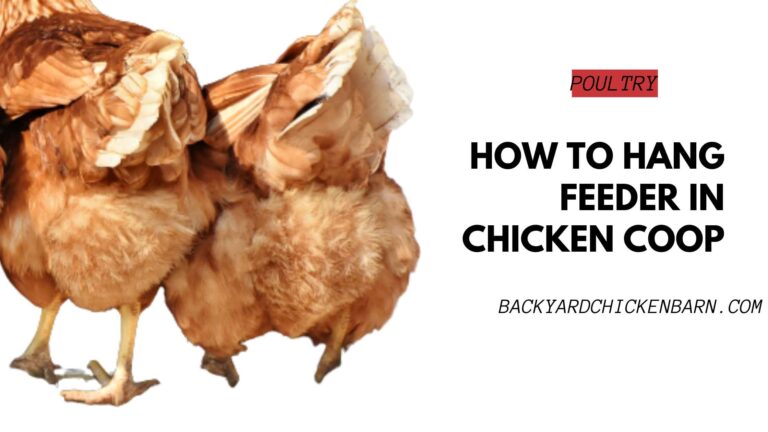Managing Chicken Parasites: A Step-by-Step Guide
Dealing with chicken parasites is a critical aspect of maintaining a healthy backyard flock. Parasites can cause significant health issues, including weight loss, reduced egg production, and even death if left untreated. Here’s how you can identify, treat, and prevent both internal and external parasites in your chickens.
Step 1: Identifying Parasites
External Parasites:
- Mites: Common types include Northern Fowl Mites, Red Chicken Mites, and Scaly Leg Mites. Look for signs such as feather loss, incessant preening, pale combs, and visible mites around the vent or under feathers.
- Lice: Look for small, fast-moving insects and eggs clinging to the base of feathers, especially around the vent area. Symptoms include feather damage and reduced egg laying.
- Fleas and Ticks: These can be found attached to the skin, often around the head and neck, causing irritation and anemia.
Internal Parasites:
- Roundworms: Symptoms include weight loss, diarrhea, decreased appetite, and visible worms in droppings.
- Capillaria (Hair Worms): These can cause anemia, weight loss, and intermittent diarrhea. Diagnosed through fecal tests.
- Tapeworms: Visible in droppings, they cause weight loss and decreased egg production.
Step 2: Treating External Parasites
- Mites and Lice: Use poultry dust or sprays containing permethrin or pyrethrin. Dust the birds thoroughly, focusing on the vent, wings, and tail. Repeat treatment every 7-10 days to break the life cycle of the parasites. For Scaly Leg Mites, soak the legs in warm water, dry them, and apply a layer of petroleum jelly or olive oil to smother the mites.
- Fleas and Ticks: Regularly check for and manually remove ticks. Use pyrethrin-based sprays or diatomaceous earth in the coop and nesting boxes to reduce flea populations.
Step 3: Treating Internal Parasites
- Roundworms and Capillaria: Medications like fenbendazole or ivermectin are commonly used. Administer according to vet recommendations and repeat treatments as necessary to ensure all worms are eradicated. Quarantine infected birds and rotate pastures to prevent re-infection.
- Tapeworms: Praziquantel is effective but ensure to follow withdrawal periods for eggs and meat consumption. Regular fecal tests help monitor the presence and load of internal parasites.
Step 4: Preventative Measures
- Cleanliness: Regularly clean and disinfect the coop, nesting boxes, and all equipment. Remove old bedding and replace it with fresh materials frequently to reduce the habitat for parasites.
- Dust Baths: Provide dust baths with diatomaceous earth or wood ash to help chickens naturally manage external parasites.
- Diet and Health: Ensure a balanced diet high in protein and essential nutrients to keep the chickens’ immune systems strong. Adding garlic and apple cider vinegar to water can help deter some parasites naturally.
Step 5: Regular Monitoring
Perform regular health checks on your chickens. Look for signs of parasites and monitor their overall health. Keep detailed records of treatments and any recurring issues to better manage your flock’s health.
By following these steps, you can effectively manage and prevent chicken parasites, ensuring your flock remains healthy and productive. Regular monitoring, proper hygiene, and appropriate treatments are key to maintaining a parasite-free environment for your chickens.
FAQs on Chicken Parasites
What are the most common external parasites in chickens? Common external parasites in chickens include mites, lice, fleas, and ticks. Mites, such as Northern Fowl Mites and Red Chicken Mites, cause anemia and feather loss. Lice lay eggs at the base of feathers, leading to irritation and decreased egg production. Fleas and ticks can cause irritation and anemia, particularly around the head and neck.
How can I treat my chickens for mites? To treat mites, dust your chickens with poultry dust or sprays containing permethrin or pyrethrin. Focus on the vent, wings, and tail areas. Repeat treatments every 7-10 days to break the life cycle of the mites. For Scaly Leg Mites, soak the legs in warm water, apply olive oil or petroleum jelly, and use a healing salve to treat the affected areas.
What are the signs of internal parasites in chickens? Signs of internal parasites include weight loss, diarrhea, decreased appetite, pale combs, and visible worms in droppings. Specific parasites like roundworms and Capillaria can cause additional symptoms such as stunted growth, anorexia, and misshaped eggs. Regular fecal tests can help identify the presence of internal parasites.
How often should I deworm my chickens? Regular deworming is crucial for maintaining a healthy flock. Consult with a veterinarian to develop a deworming schedule tailored to your flock’s needs. Typically, deworming should be done 2-4 times per year, depending on the parasite load and environmental conditions. Use medications like fenbendazole or ivermectin as recommended.
What preventive measures can I take to avoid parasite infestations? Preventive measures include maintaining a clean and dry coop, providing dust baths with diatomaceous earth or wood ash, and ensuring a balanced diet high in protein and essential nutrients. Regularly inspect your chickens for signs of parasites and quarantine new birds before introducing them to your flock. These steps help create a parasite-free environment.
By following these guidelines, you can effectively manage and prevent chicken parasites, ensuring your flock remains healthy and productive. Regular monitoring, proper hygiene, and appropriate treatments are key to maintaining a parasite-free environment for your chickens.


